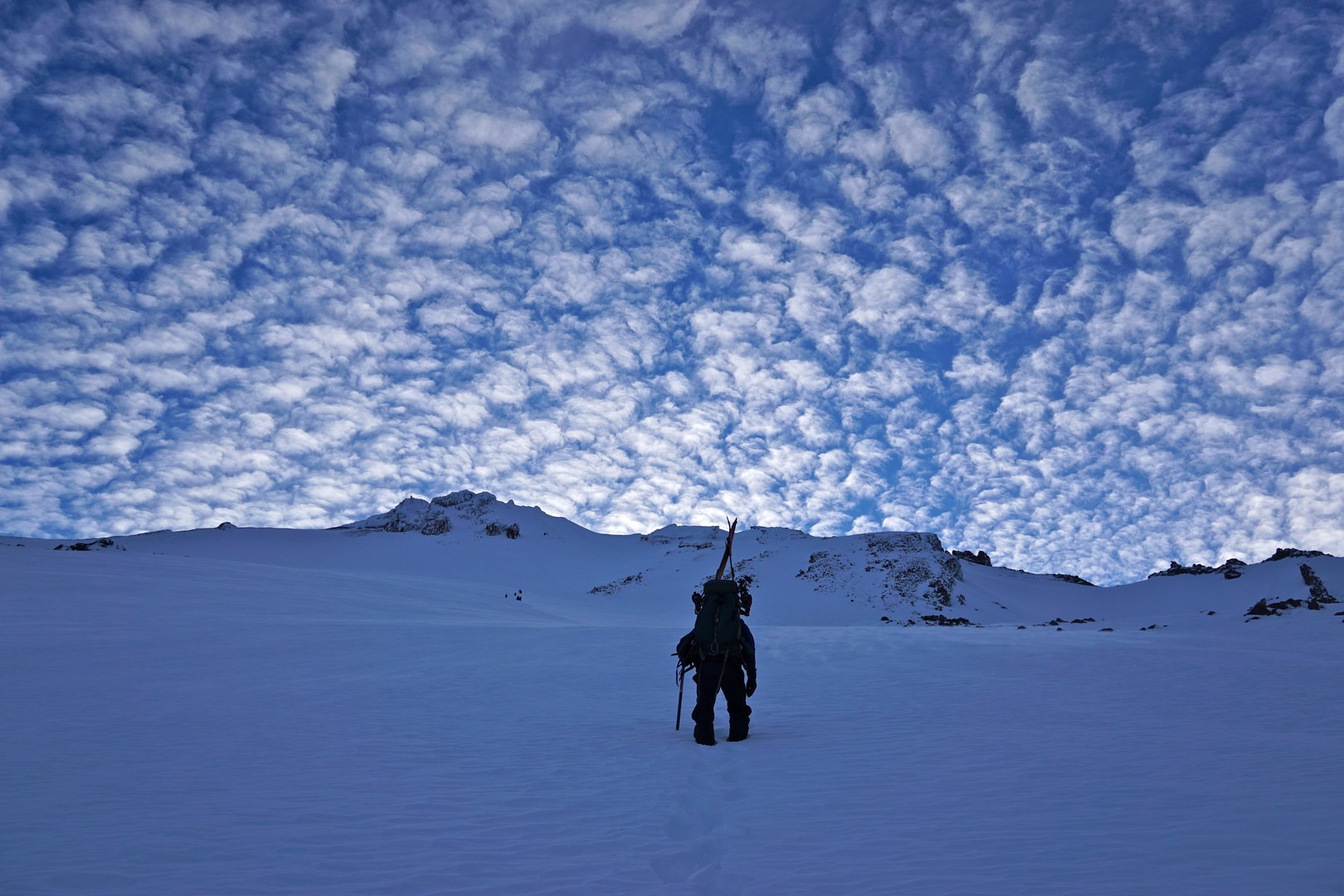You are here
At 14,179 feet, Mount Shasta finishes runner-up to 14,411-foot Mount Rainier for the title of tallest volcano in the Cascade Range. What it lacks in height, which isn't much, it makes up for in mass; with an estimated volume of 85 cubic miles, it is the most voluminous volcano in the range. Mount Shasta features prominently in the Northern California landscape, and it is a hulking mass on approach. Just the Shastina sub-peak alone would dominate the horizon. Mount Shasta's geological activity provides additional mystique, with it's most recent eruption only a short while ago in 1786.
All of this together makes Mount Shasta a frequent mountaineering objective. The most common route of ascent is Avalanche Gulch on the south side of the mountain. For those seeking a less populated route of similar technical difficulty, the West Face is often happy to oblige. The exchange is a longer, less direct route to the summit - Avalanche Gulch is a very difficult one day objective, but climbing the West Face in a single day would be nearly impossible for most mortals. Additionally, the West Face is a premium ski objective, offering 4,000 feet of 30- to 40- degree pitch descent. The West Face season is typically May through July, but this varies from year to year.
The West Face route begins from the same Bunny Flat trailhead as Avalanche Gulch and shares the lower section of the trail to the Sierra Club Hut at Horse Camp. Those attempting the West Face will bear left at the hut and most frequently head for camp at Hidden Valley. From the hut it is approximately 4 miles and roughly 2,300 feet of net elevation gain to Hidden Valley, depending on route. The route to Hidden Valley is unmarked, but the route finding is relatively straight forward as it traverses around the toe of Casaval Ridge before climbing up into the valley. The difficulty of the route will be condition dependent: Conditions that are either free of snow or that allow for good skinning are best. Traversing into hidden valley in soft, slushy snow is a brutal undertaking, and it makes the final leg across exposed talus slopes very perilous. An alternative route, which was done in this adventure, involves ascending one of the bowls between Casaval Ridge and Cascade Gulch and dropping in on Hidden Valley from above.
Hidden Valley is located at 9,200 feet. It makes for a long summit bid on the following day (4,900 feet over 3.5 miles), but it is the best option for overnight camping for the West Face route. The route from Hidden Valley to the top of the West Face is visible, relatively straightforward, and a bit of a choose-your-own-adventure. The two most common routes are to ascend straight up the West Face Gully passing through a set of steep chutes just above 10,000 feet, or to veer right of the steep chutes through lower angle terrain and then traverse back to the West Face Gully somewhere around 11,000 feet. The second route will most often afford extra distance skinning before making the switch to crampons. The top of the West Face is a saddle at 13,300 feet.
From the top of the West Face the route to the summit is visible. Traverse above the Whitney Glacier, ascend Misery Hill, then ascend the summit plateau. For most climbers, the remaining 900 feet to the summit will be somewhere in the range of a 2 hour return trip. Some climbers will continue with ski or snowboard gear up Misery Hill; however, the summit does not allow for a ski descent, and the ski of Misery Hill often does not outweigh the additional transitions required. More often than not, ski and snowboard gear is left in a protected area at the top of the West Face to be retrieved after the summit bid. Once atop Misery Hill the route rejoins with Avalanche Gulch (and other south routes), and climbers make the final weary push together.
The summit is a remarkable achievement, but the glory of the West Face route is the 4,000 feet of uninterrupted ski descent to Hidden Valley. For spring corn snow, a 11 a.m. to 12 p.m. descent time is often recommended, but this will be very condition dependent. Conditions may permit additional ski descent once back at Hidden Valley, but more often than not climbers will pack up and begin the 3.5-mile hike back to bunny flat.
Note: This is a ski mountaineering adventure. Crampons, an ice axe, and a helmet should be mandatory items of gear.
Logistics + Planning
Current Weather: Powered by Dark Sky






























Comments
Sign In and share them.